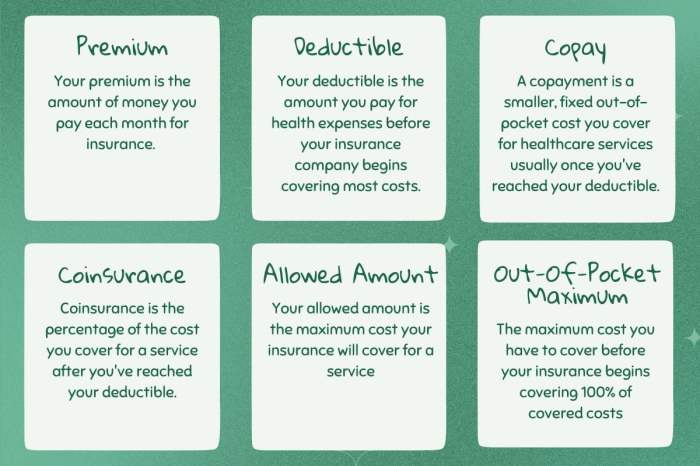Navigating the complexities of tax deductions can be a daunting task, especially when dealing with financial instruments like life insurance. The question, “Is life insurance premium deductible?” frequently arises, prompting many to delve into the intricacies of tax laws and regulations. This guide aims to demystify the process, providing a clear and concise understanding of the deductibility of life insurance premiums across various situations and jurisdictions. We’ll explore different life insurance types, business versus personal applications, and the interplay with other tax deductions, ultimately equipping you with the knowledge to make informed financial decisions.
Understanding the deductibility of your life insurance premiums can significantly impact your overall tax liability. Factors such as the type of policy (term, whole, universal), the purpose of the insurance (personal or business), and the specific tax laws of your country all play crucial roles in determining whether you can claim a deduction. This comprehensive guide will dissect these factors, providing illustrative examples and case studies to clarify the often-confusing landscape of life insurance tax implications.
Tax Deductibility of Life Insurance Premiums

The deductibility of life insurance premiums for tax purposes varies significantly across different countries and is often dependent on the type of policy and the purpose for which the insurance is held. Generally, premiums are not deductible as a business expense unless they meet specific criteria, usually relating to the policy being a business-related expense. Personal life insurance premiums are rarely deductible.
General Rules Regarding Deductibility
The overarching principle is that life insurance premiums are typically considered personal expenses and are therefore not tax-deductible. However, exceptions exist, particularly in situations where the life insurance policy is directly related to business activities or is held to cover key-person risk. Specific regulations differ considerably, influenced by national tax codes and interpretations. For instance, some countries may allow deductions for premiums paid on policies insuring business partners or key employees, while others might offer deductions only under very limited circumstances, such as when the policy is part of a qualified retirement plan. It is crucial to consult the specific tax laws and regulations of the relevant jurisdiction.
Examples of Deductible and Non-Deductible Premiums
Deductible Premiums: A business owner might deduct premiums on a life insurance policy insuring a key employee, where the death benefit would compensate for the loss of that employee’s expertise and contribution to the business. This is because the policy is directly related to the business’s financial stability. Another example could involve a corporation taking out a life insurance policy on a significant shareholder, where the proceeds would help cover potential debts or other financial obligations upon the shareholder’s death. These are usually subject to specific limitations and regulations.
Non-Deductible Premiums: Premiums paid on a personal life insurance policy designed to provide financial security for a family are generally not deductible. Similarly, premiums paid on policies with investment components, often termed cash value life insurance, are usually not fully deductible, even if there is a death benefit component. Premiums on policies solely held for personal financial protection, such as a term life insurance policy covering an individual’s mortgage, are typically non-deductible.
Specific Tax Codes and Regulations
Providing specific tax codes for all countries is impractical within this context. However, examples illustrate the variability. In the United States, Internal Revenue Code Section 162 generally governs business expense deductions, but life insurance premiums are rarely deductible unless directly tied to a business purpose. Similarly, in the UK, deductibility would typically depend on the specific circumstances and whether the premium payment qualifies as a legitimate business expense under relevant tax legislation. Consultants specializing in tax law are essential for precise guidance.
Comparison of Deductibility Rules Across Tax Jurisdictions
| Country | Deductibility Rules | Specific Regulations (Illustrative) | Exceptions |
|---|---|---|---|
| United States | Generally not deductible for personal policies; may be deductible for business purposes under specific conditions | IRC Section 162 | Key-person insurance, business continuation policies |
| United Kingdom | Generally not deductible unless a legitimate business expense | Relevant UK tax legislation (specific sections vary) | Policies linked to business protection |
| Canada | Similar to the US and UK, generally not deductible unless related to business operations | Income Tax Act | Key employee insurance, corporate-owned life insurance (COLI) under specific conditions |
| Australia | Generally not deductible, but exceptions may apply for specific business purposes | Income Tax Assessment Act | Business-related life insurance policies |
Impact of Other Tax Deductions and Credits

The deductibility of life insurance premiums, while potentially beneficial, doesn’t exist in a vacuum. It interacts with other tax deductions and credits you might be eligible for, potentially influencing your overall tax liability in complex ways. Understanding these interactions is crucial for maximizing your tax savings.
The interplay between life insurance premium deductions and other tax benefits hinges on the fact that all deductions reduce your taxable income. This reduction, in turn, affects your overall tax liability, and how other tax credits are calculated. Some deductions might be limited based on your adjusted gross income (AGI), which is your gross income less certain above-the-line deductions. A life insurance premium deduction would affect your AGI, and subsequently impact the calculation of other deductions or credits tied to your AGI.
Interaction of Life Insurance Premium Deductions with Other Deductions
A reduction in taxable income due to a life insurance premium deduction directly impacts the amount of tax you owe. However, the significance of this impact depends on your overall tax situation and the size of other deductions. For instance, if you already itemize and have significant deductions for things like mortgage interest or charitable contributions, the addition of a life insurance premium deduction might not drastically alter your tax liability. Conversely, for taxpayers with fewer deductions, this additional deduction could be more impactful. This also highlights the importance of strategic tax planning, where the timing of deductions and contributions should be carefully considered.
Scenarios Affecting Eligibility for Other Tax Benefits
Certain tax credits are dependent on your adjusted gross income (AGI). Since a life insurance premium deduction lowers your AGI, it could potentially increase your eligibility for certain credits or improve the value of those credits. For example, the Earned Income Tax Credit (EITC) or the Child Tax Credit (CTC) are partially or fully dependent on AGI. A larger deduction could lead to a higher credit amount. However, this relationship isn’t always straightforward. Some credits might have income thresholds. While lowering your AGI might make you eligible for a credit, it might also push you above a threshold, making you ineligible. Careful analysis is essential in these scenarios.
Taxable Income Calculation with Multiple Deductions
Calculating taxable income with multiple deductions, including life insurance premiums (where applicable), involves a step-by-step process. First, determine your gross income. Then, subtract above-the-line deductions, such as those for contributions to a traditional IRA or health savings account (HSA). Next, subtract any itemized deductions, including the life insurance premium deduction (if applicable), mortgage interest, state and local taxes (SALT), and charitable contributions. The result is your adjusted gross income (AGI). Finally, any applicable standard deduction is subtracted from the AGI to arrive at your taxable income. This taxable income is then used to calculate your tax liability. The formula can be simplified as follows:
Taxable Income = Gross Income – Above-the-Line Deductions – Itemized Deductions (including life insurance premiums) – Standard Deduction
Hypothetical Example Illustrating Tax Liability Impact
Let’s consider two taxpayers, both with a gross income of $80,000. Taxpayer A itemizes and has $20,000 in itemized deductions (excluding life insurance premiums) and a $1,000 life insurance premium deduction. Taxpayer B itemizes and has $18,000 in itemized deductions (excluding life insurance premiums) and no life insurance premium deduction. Assuming a standard deduction of $12,950 (for simplicity, we are ignoring other potential factors affecting the standard deduction) and a simplified tax system for illustrative purposes, the impact of the life insurance premium deduction can be seen:
| Taxpayer | Gross Income | Above-the-Line Deductions | Itemized Deductions (excluding life insurance) | Life Insurance Premium Deduction | AGI | Taxable Income | Tax Liability (Simplified Example) |
|—|—|—|—|—|—|—|—|
| A | $80,000 | $0 | $20,000 | $1,000 | $59,000 | $46,050 | $X |
| B | $80,000 | $0 | $18,000 | $0 | $62,000 | $49,050 | $Y |
In this simplified example, Taxpayer A’s lower taxable income due to the additional life insurance premium deduction results in a lower tax liability (X) compared to Taxpayer B’s tax liability (Y). The exact difference in tax liability (Y-X) depends on the applicable tax brackets and rates. The key takeaway is that the additional deduction demonstrably reduces the final tax liability. Note: This is a simplified example and doesn’t account for all possible tax situations and deductions.
Summary

In conclusion, determining whether your life insurance premiums are deductible requires careful consideration of several interacting factors. The type of policy, its purpose (personal or business), and the applicable tax laws of your jurisdiction are all paramount. While general rules exist, the specifics can be nuanced and complex. This guide has provided a framework for understanding these complexities, empowering you to navigate the process with greater confidence. Remember to consult with a qualified tax professional for personalized advice tailored to your specific circumstances.
Question Bank
Can I deduct life insurance premiums on my taxes if I have a high-deductible health plan?
Generally, no. Deductibility of life insurance premiums is separate from health savings account (HSA) or high-deductible health plan (HDHP) considerations. They are unrelated tax benefits.
Are life insurance premiums deductible for self-employed individuals?
The deductibility depends on the type of insurance and its purpose. Premiums for key-person insurance (business purpose) may be deductible, but personal life insurance premiums typically are not.
What happens if I overstate the deduction for life insurance premiums?
Overstating the deduction can result in an underpayment penalty and potential audit. Accurate record-keeping is crucial.
Where can I find more specific information about life insurance premium deductibility in my country?
Consult your country’s tax authority website or a qualified tax professional for precise details relevant to your location and specific circumstances.